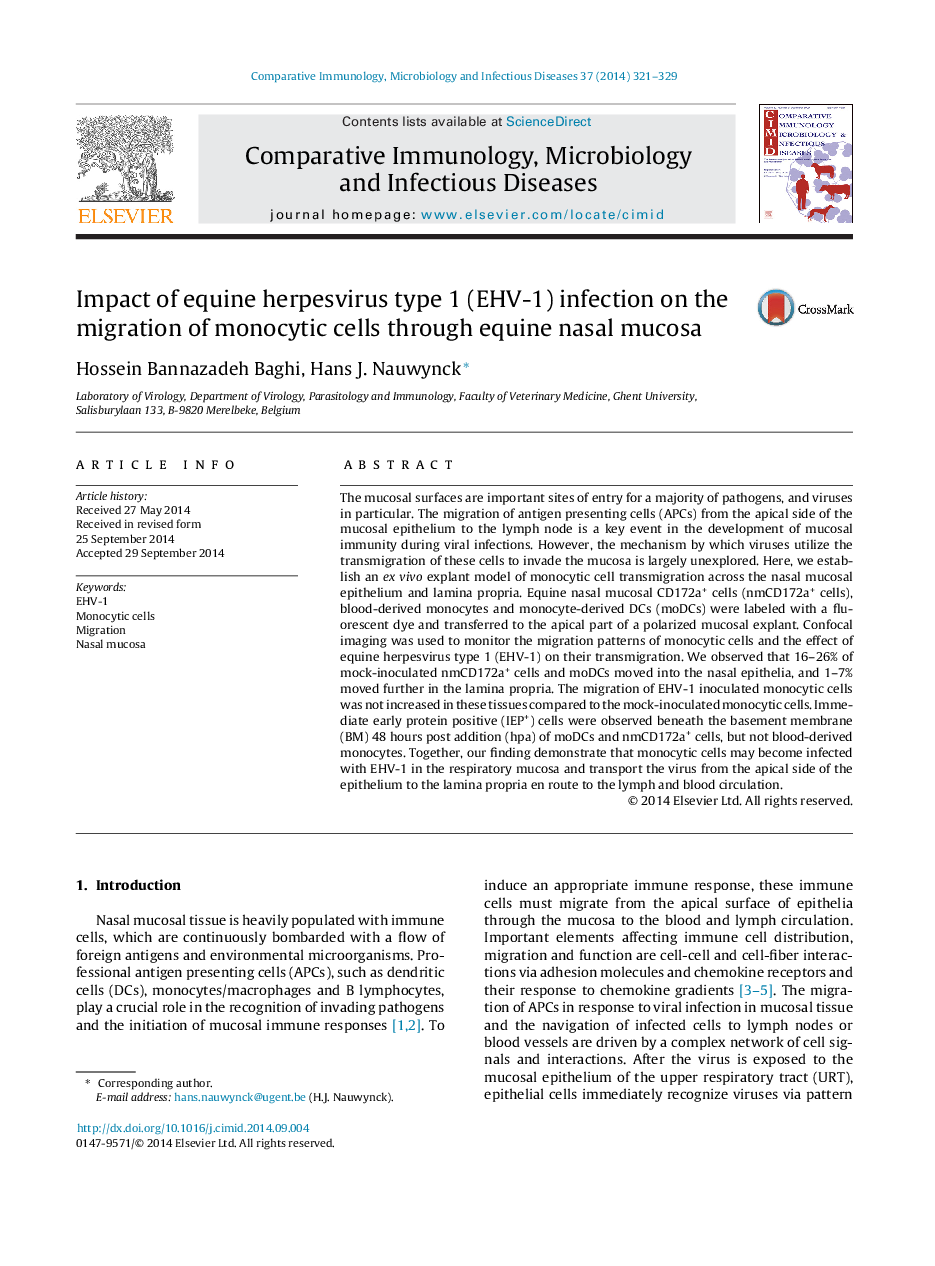| Article ID | Journal | Published Year | Pages | File Type |
|---|---|---|---|---|
| 2428316 | Comparative Immunology, Microbiology and Infectious Diseases | 2014 | 9 Pages |
The mucosal surfaces are important sites of entry for a majority of pathogens, and viruses in particular. The migration of antigen presenting cells (APCs) from the apical side of the mucosal epithelium to the lymph node is a key event in the development of mucosal immunity during viral infections. However, the mechanism by which viruses utilize the transmigration of these cells to invade the mucosa is largely unexplored. Here, we establish an ex vivo explant model of monocytic cell transmigration across the nasal mucosal epithelium and lamina propria. Equine nasal mucosal CD172a+ cells (nmCD172a+ cells), blood-derived monocytes and monocyte-derived DCs (moDCs) were labeled with a fluorescent dye and transferred to the apical part of a polarized mucosal explant. Confocal imaging was used to monitor the migration patterns of monocytic cells and the effect of equine herpesvirus type 1 (EHV-1) on their transmigration. We observed that 16–26% of mock-inoculated nmCD172a+ cells and moDCs moved into the nasal epithelia, and 1–7% moved further in the lamina propria. The migration of EHV-1 inoculated monocytic cells was not increased in these tissues compared to the mock-inoculated monocytic cells. Immediate early protein positive (IEP+) cells were observed beneath the basement membrane (BM) 48 hours post addition (hpa) of moDCs and nmCD172a+ cells, but not blood-derived monocytes. Together, our finding demonstrate that monocytic cells may become infected with EHV-1 in the respiratory mucosa and transport the virus from the apical side of the epithelium to the lamina propria en route to the lymph and blood circulation.
